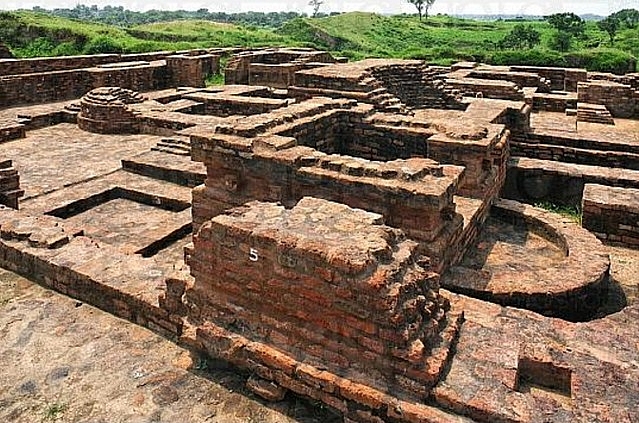Insta
ASI Unearths 900 Year Old Buddhist Monastery In Jharkhand’s Hazaribagh District

Ghoshitaram monastery in Kaushambi. A representative image (Pic Via Wikipedia)
A 900 year old Buddhist monastery was unearthed by the Archaeological Survey of India (ASI) in Hazaribagh district of Jharkhand, reports The Indian Express.
The Patna branch of ASI has excavated ten stone statues of deity Tara and the Buddha in Burhani village near Juljul Pahar of Sitagarhi Hills located around 12 km from district headquarters Hazaribagh. ASI officials have said that they found a sculpture which appears to be that of Shaivite deity Maheswari indicating cultural assimilation in the area.
Assistant Archeologist Niraj Kumar Mishra from Excavator Branch III of Patna ASI, said in December 2020 they found a Buddhist shrine with three rooms near an agricultural land on the eastern side of Juljul Pahar. He said that while the central shrine had Tara’s statue, two subsidiary shrines had the Buddha’s.
“We concentrated on a mound near Juljul Pahar foothills where we found remnants of a Buddhist monastery-cum-shrine where there are rooms at the sides and an open courtyard,” said Mishra.
“We found four statues of deity Tara in Varad Mudra that is a gesture of hand showing dispensing of boons and six statues of the Buddha in Bhumisparsa Mudra, a gesture of hand showing five fingers of right hand towards the earth symbolising the Buddha’s enlightenment. So it is a significant finding as deity Tara’s statues means this was an important centre of Vajrayana sect of Buddhism, he added.
Mishra said, “the ASI has not yet done scientific dating of the structures, but it represents Pala period based on earlier findings. Last year, during excavation we found a script of four-five words and sent it to ASI Mysore for Paleographic dating for historical manuscripts. They said it was a Nagri script and they dated it between 10th century AD to 12th century AD. Nagri is a previous version of Devnagri script and the words indicate Buddhist religious affiliation. This time also we have got Nagri script on a Tara statue.”
ASI Patna Superintending Archaeologist Rajendra Dehuri said, “this is a significant finding in terms of spread of Buddhism in Jharkhand. However, it is also a matter of research and further findings.”
Introducing ElectionsHQ + 50 Ground Reports Project
The 2024 elections might seem easy to guess, but there are some important questions that shouldn't be missed.
Do freebies still sway voters? Do people prioritise infrastructure when voting? How will Punjab vote?
The answers to these questions provide great insights into where we, as a country, are headed in the years to come.
Swarajya is starting a project with an aim to do 50 solid ground stories and a smart commentary service on WhatsApp, a one-of-a-kind. We'd love your support during this election season.
Click below to contribute.
Latest